Revised August 2024
Are you ready for a challenge?
Find the yellow umbrella.
We can learn something from every single person.
That’s a conviction that I have.
My challenge to you is to try to find that something in every single pet owner or animal professional that you meet.
What animal-related piece of knowledge can you gain from that person?
Find the yellow umbrella. The nugget of wisdom that will change how you interact with animals.
Ignore the other, black umbrellas: the ideas, techniques and explanations that don’t fit your paradigm. And here’s the challenge: though you might find these black umbrellas appalling – the task in this exercise is to ignore them rather than allow them to flip your lid.
Rather, pick and choose that which resonates with you. What you find might be an animal-related technique, a piece of knowledge, or merely an idea that you can mold to fit your own framework.
I try to approach animal trainers from all camps with an open heart and mind, knowing that they all have some insight that will help me improve my understanding of the world in general, and animals in particular.
So, which nugget of knowledge do I find with the Dog Whisperer, Cesar Millan?
Time for a disclaimer: I disagree with how Millan explains behaviour, his choices of training technique and the way he relates to animals.
For me, those are black umbrellas.
But this blog post isn’t about the black umbrellas of the Dog Whisperer; there has been a ton of scientifically founded blog posts published criticizing his black umbrellas. You can find such posts here, and I’m generally in agreement with them.
In fact, I wrote a free E-book detailing the 20 problems with punishment. Sounds interesting? Just sign up below to access it along with the infographic, and I’ll also keep you posted on free webinars, online courses and future blog posts!
Before we get into the weeds, a sidenote.
I do get a lot of pushback regarding this blog post, and for three somewhat different reasons.
- Many people find it impossible to momentarily put aside and ignore Millan’s black umbrellas, and this approach becomes an exercise in futility and frustration – they don’t deem it’s worth the effort. Time and energy is limited, and it’s too unpleasant to sift for those potential nuggets. And I can fully relate to that – absolutely. To this objection, my answer would simply be – then don’t do it. This should be an interesting and challenging exercise, not a painful one. And one arguably better invested in neighbors, relatives or coworkers rather than a controversial TV personality. It’s the principle of looking for the common ground that I’m trying to illustrate with this talk of yellow and black umbrellas, not Millan specifically. If it gets too painful it’s better to simply walk away to retain one’s sanity.
- Some people think that looking after any useful nuggets in Millan’s teaching also somehow condones the black umbrellas – and they wouldn’t touch him with a ten-foot pole. They think we shouldn’t look for any common ground, but would rather ostracize and shun him altogether. To this objection, I would respectfully disagree. I think cancel culture is deeply problematic: dehumanizing, polarizing and thoroughly unproductive. To me, the solution is not shunning, but debate. Many naive people watch Millan and are impressed by his charisma and “quick fixes”, and once they are under his spell they might get affronted by proxy: their hero is under attack! And here is the difficulty: if we truly want to change someone’s mind, the climate of such a debate must not be confrontative – that will just make the barriers go up. What we must do is find the common ground. In this blog post, I’m suggesting one way of doing that. Achieving a shift in frames is another approach.
- I’ve also had people suggesting that by writing this post I’m just trying to make money by “appealing to the abusers”. And, let’s for a moment assume that they’re right. By writing this blog post, I’m going to appeal to some of the “abusers”, who will now start following my work, perhaps take part of my free trainings, or even buy one of my courses. To this objection, I can confidently say that if I can get them that truly into my clutches that they enroll in a course, I will convert them. I’m not concerned that the “abusers” will subvert my work or students, but if my teaching helps people change their minds and change their behaviours, that will in turn change the lives of the animals they touch for the better – and perhaps some ripple effects will spread even further into their communities. And how is that even a bad thing?
***
Again, this blog post is about finding the yellow umbrella. Rather than picking on the many things I disagree with, what knowledge does Millan share that I think is actually useful?
For me, it is this:
See the film that summarizes the main points of this blog post:
The importance of body language.
Millan talks about it, but indirectly. He talks about energy, and conceptualizes energy as emotion and intention.
He speaks about the importance of being calm, assertive.
And that the dogs should be calm, submissive.
As I’ll explain below, I think the concept of dominance doesn’t belong here, but I do think he’s on to something – with regards to the person’s body language.
So, while I’m not buying his verbal explanation, and disagree with how he actually goes about implementing body language, I think that he’s using a tool that many of us are unaware of.
A phenomenon that has been overlooked by many pet owners and animal professionals.
Power posing – effects on chemistry and behaviour.
I saw a fascinating TED talk a few years back.
Harvard professor Amy Cuddy’s talk, called: “Your body language shapes who you are.”
Cuddy’s TED talk has been seen over 72 million times; it’s the second most viewed TED talk of all time presently – if you haven’t seen it, do.
It’s absolutely fascinating.
To summarize her presentation: By changing body positions, we change our body chemistry. And by doing so, we change our behaviour. Our assertiveness. Our risk taking.
And importantly, we change people’s perceptions of us.
In a famous study, Cuddy and colleagues let volunteers assume a certain body pose for two minutes. These poses were either High Power Poses, or Low Power Poses.
- High Power – expansive, taking up space, legs apart, arms wide. Assertive, confident. Sort of like Super-Woman.
- Low Power – legs crossed, arms crossed, slouching. Insecure. Think… Clark Kent. The Christopher Reeve interpretation (not the Tom Welling, Dean Kain or Henry Cavill versions).
In case you’re wondering, you have the opportunity of seeing me doing these Power Poses in the short video that goes with this blog post. Here it is again: see Karolina do the Power Poses and explain the main ideas of this blog post.
So, here are some data for all us geeks.
After 2 minutes of posing, the High-power people … Wonder woman… had increased their levels of testosterone (a hormone related to aggression).
And not just a trifle, but about 20 percent.
They also decreased their cortisol levels by one quarter.
What’s cortisol again? It’s a stress hormone.
Isn’t that interesting?
But wait. It gets even better.
It was vice versa in the Low-power people. The Clark Kents.
The Clarks get a reduction of testosterone. And a cortisol spike – in other words a stress response.
After two minutes of doing nothing other than assuming a special body position!
Just look at that! The effects of High versus Low Power Poses are opposite mirror images with regards to these hormones.
Mind-boggling.
But is it important? Does it change behaviour?
It sure does.
The high-power posing people were more prone to gamble afterward, too – more risk-taking (and in some cases, more vengeful, see below). So, the Wonder Women would likely gamble, but they wouldn’t be stressed.
Their cortisol is low.
Testosterone high.
Confident and at ease.
Calm assertive.
Now, where have we heard that expression…?

The Clark Kents, having done Low Power Posing, are less likely to gamble. But stressed. And insecure.
So there’s a measurable change in body chemistry as well as behaviour. After spending 2 minutes in a certain body position.
Power Posing has huge and important effects on chemistry – and behaviour.
You know where I’m going with this, right?
No?
Hint: which type of Power Posing do we see from Cesar Millan, the Dog Whisperer?
But let’s not go there yet.
You see, the findings don’t end here. In fact, here’s where it gets really interesting.
So, after High or Low Power Posing for two minutes, researchers sent their volunteers into a very stressful job interview, where they had to spend 5 minutes talking about why they should get their dream job in front of two stone-faced evaluators and a camera.
Without knowing which group a person had been assigned to, evaluators watching only the stress-inducing job interview film would select the High-power people, and reject the Low-power people.
So, there’s a change in how they were visually perceived. It wasn’t the content of the speech, mind you. It’s about the presence. Confidence.
In her TED talk, Cuddy says:
“Our bodies change our minds
And our minds change our behaviour
And our behaviour changes our outcomes”
So let’s bring that quote back to Cesar Millan, the Dog Whisperer. Who is constantly doing High Power Poses.
I mean – just watch an episode. Turn the volume down and look at how he carries himself.
Ignore the training part and what he actually says. The black umbrellas.
Look at body language. The yellow umbrella that’s the topic of this blog post. I’ll get back to in a while how I would tweak this differently than the Dog Whisperer.
Yes, that’s a bold statement coming from someone who’s never owned a dog and doesn’t work hands-on with dogs.
But think of that statement as just another umbrella. Is it black, or is it yellow? Read on and find out whether you agree or not. My expertise is not in dogs, it’s in behaviour. I’m not the hands-on type person. I’m more of an observer.
And right now I’m watching a random episode of the Dog Whisperer.
Look at the body language of his clients. Many of them are doing Clark Kent – impersonations. Limbs crossed, eyes down.
Back to the quote. “our bodies change our minds… our behaviour… our outcomes”.
Power Posing changes other people’s perception of us.
What about a dog’s perception? What if you had been Power Posing before interacting with the animal? People spot the difference – how about dogs?
A dog would have three different types of input from a human who’s been doing Power Posing before the interaction:
- The visual input. The stance. How a person moves. Whether they seek eye contact. Are they staring, or just looking?
- The choice input. The decisions of the person. The degree of risk-taking. The tone of voice. The choice of training techniques. And that brings in the whole dimension of reinforcement and punishment, and classical conditioning, of course. But let’s put all that aside. In this blog post, I don’t want to lose myself in discussing the choice of training techniques. Just know that the choice of training technique and criteria setting is likely to be affected by Power Posing.
- And the olfactory input. Smells. Remember, 2 minutes of High Power Posing leads to a 20% increase in testosterone!
Can dogs smell that?
Rhetorical question.
People can smell testosterone! Women prefer the smell of manly guys, and it’s the testosterone that they detect.
Of course dogs can smell that!! Their olfactory sense is a gazillion times better.
Dogs can smell testosterone. A hormone associated with aggressive behaviour.
And they can also smell cortisol. A stress-related hormone.
Will they change their behaviour as a consequence of all this input?
I think so.
But wait, there’s more.
Power Posing is complemented, not mirrored.
Back to Amy Cuddy. One of the things she mentions in passing in her TED talk is that when humans interact with one another, we complement the other individual’s nonverbal power posing behaviour – we don’t mirror them, we do the opposite of them.
We may mirror other behaviour, but when it comes to power, we tend to complement the other’s nonverbals.
In humans, if one individual does a High Power Pose, the other is likely to respond with a Low Power Pose.
Think about this for a second. If a person in front of you with whom you’re interacting is standing in a High Power Pose, you’d feel uncomfortable doing one too if you’re facing each other. It would be as if you were challenging that person. In a conflict.
It’s confrontational. Antagonistic.
So, apparently, we humans complement rather than mirror Power Poses.
OK, so we now know two things:
- Power Posing changes chemistry and behaviour.
- If you Power Pose facing someone else, you in turn influence that individual’s choice of Power Pose.
And here’s the thing – isn’t that exactly what Cesar Millan does?
I would suggest that, not only does he spend a lot of time in High Power Poses changing his body chemistry and assertiveness, but he actually makes a point of assuming High Power Poses facing the dog.
Challenging the dog, as it were.
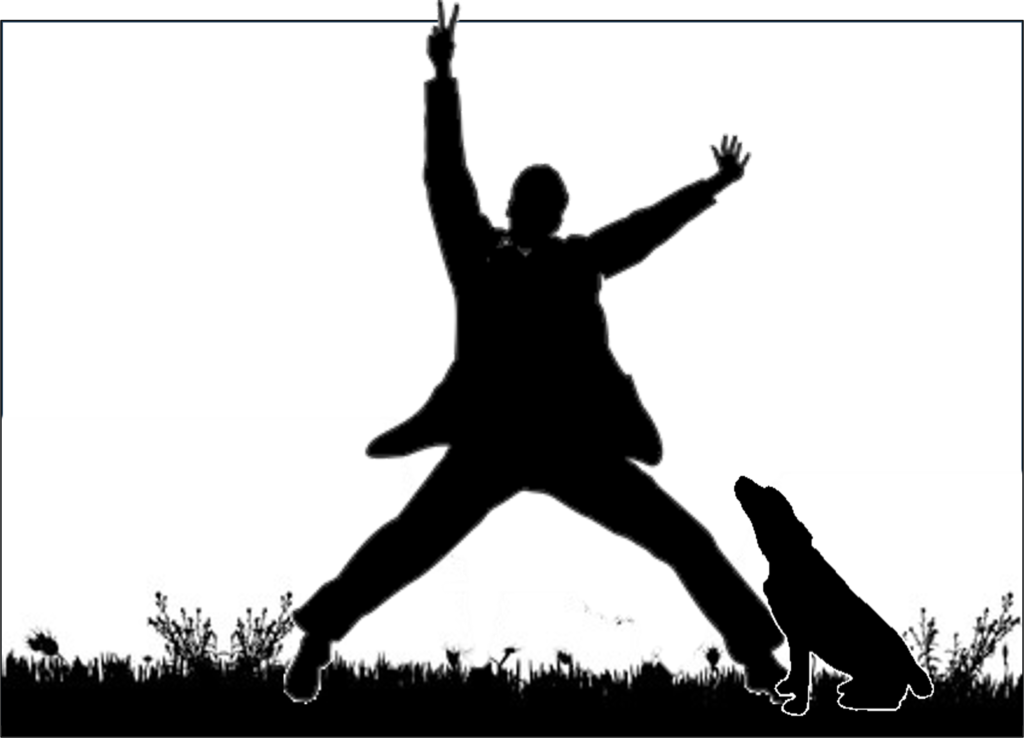
Dogs evolved with humans. Our ancestors intentionally selected individuals that collaborated with us.
Dogs today, living with humans, can read emotional expressions in humans.
I wonder if part of the domestication process involved molding dogs to do this power posing “dance” with us.
That we sometimes respond to assertive aggressive body language in dogs with Low Power Poses, and vice versa: they do the same – doggie versions of Low Power Poses.
That this pattern of interaction that’s documented between humans also might occur between dogs and humans.
As far as I know, that hasn’t been studied. This is just me throwing out an unsubstantiated idea.
I’m speculating that part of what Millan does in his TV shows is that he High Power Poses in front of dogs until they change from the doggie High Power Pose – or neutral – into the canine version of the Low Power Pose.
“Calm assertive” vs “calm submissive”
Milan calls the ideal human energy state calm assertive. That’s a good name, I think – I agree. For me, this is part of the yellow umbrella.
“Calm” probably corresponding to a low level of cortisol.
“Assertive” might then be associated with high levels of testosterone.
Though he does it in front of the dog – and I think it’s a fair assumption that he challenges them to change their body language. That, for me, is a black umbrella. More on that shortly.
He calls the dog’s energy state calm submissive.
For me, the dog is neither calm nor necessarily submissive and that term doesn’t at all capture what’s going on. In my world, the expression calm submissive is a black umbrella.
I don’t know whether anyone has examined explicitly what happens with regards to body chemistry in dogs when in this so called calm submissive state.
If body chemistry changes in the same way as it does in humans when assuming a Low Power Pose, we can expect an increase in cortisol. An increase in the stress response. That is not “calm” – it’s the opposite: high arousal. In fact, stressed animals who stop struggling could be in a state of learned helplessness or immobility – and that is something altogether different from “calm”.
Stress can also interfere with learning. A stressed animal may not learn what’s required of him as well as a non-stressed animal. To me, this is not a desirable state of mind for any animal that I want to teach.
“Submissive” – for me as an ethologist and a scientist, this is a term that I reserve for individuals who know each other and have developed a consistent interpersonal relationship. That’s not at all what I see on Cesar Millan’s TV shows. A more plausible explanation is that the dog has simply learned that changing body language is one way of stopping someone from staring you down or escalating. Not submission in the narrow ethological sense.
Implications.
So, I’m suggesting that Millan uses challenging Power Posing to change the body language of dogs.
Does he change the dog’s chemistry? Possibly.
Does he change their overt behaviour and decisions? Yes. Undoubtedly.
So, this has some interesting implications. And as far as I know, it hasn’t been scientifically studied.
We know behaviour changes due to a few different and to some extent overlapping mechanisms.
- Operant learning: reinforcement and punishment.
- Classical conditioning: learning to predict the order of events.
- Emotional states: emotions and moods influence behaviour (and we sometimes mistake mood change for learning).
- Input from body language, facial expressions, vocal prosody, smells and pheromones: co-regulation (nervous systems synchronizing) probably occurs between humans and animals.
How does Power Posing affect dog’s behaviour? How much explanatory power should we give to this mechanism? Are the dogs on Millan’s TV shows changing their behaviour because of the top three mechanisms, or the fourth?
I don’t know. As far as I know, this hasn’t been studied experimentally.
It would be interesting to know whether Cesar Millan would get the results he’s getting without using challenging Power Posing.
I don’t know whether he would.
But this, for me, the importance of body language, is the yellow umbrella when it comes to the Dog Whisperer.
It’s the nugget of wisdom.
I would just use it quite differently.
I wouldn’t use challenging Power Posing as a way to dominate an animal, and challenge an aggressive dog in a staring contest until he yields and assumes a low-power position.
That is not the learning outcome I want you to walk away with from this blog post. Such an animal might be stressed and not in a good place to learn.
Indeed, I think the talk of dominance is completely unnecessary in this context – it’s could simply be that it’s highly uncomfortable to be in a situation where two individuals are both in the High Power pose – one of them will switch. Or they escalate. If it ain’t the human that switches, it’s the dog. And Millan never yields in these staring contests. He does get frequently bitten, though – so escalation occurs too.
To conclude: your body language impacts your chemistry, behaviour, and decision making, and very likely, the animals in your care too.
At least dogs.
Use that to your advantage. Without putting the animal at a disadvantage. Win-win makes everybody happier. We don’t have to “put animals in their place” to get behaviour change.
Rather than using body language to dominate, use it to convey a sense of security.
Instead of using High Power Posing to challenge animals to assume the canine versions of Low Power Poses, do a High Power Pose before interacting with your dog. Much like the volunteers in professor Cuddy’s study did before the job interview.
Because if dogs can pick up on the stress-hormone cortisol, and that in turn could make them anxious, that is reason enough to think about how you carry yourself before interacting with dogs.
And perhaps around other animals.
That, for me, is the yellow umbrella of the Dog whisperer. One of the topics of this blog post. And indeed, this whole concept of considering your own body language when interacting with animals may certainly go beyond what’s discussed above; as several of my readers have mentioned in the comments’ section below, perhaps using mirroring to build connection and cooperation is something to try out?
Or might deep breathing and grounding help us achieve co-regulation?
Calm Connected – rather than calm assertive?
One slightly disconcerting thing about the effects of power posing is that a combination of high testosterone and low cortisol has been found to be associated with an increase of both impulsive and premeditated aggression – with regards to the impulsive aggression this is apparently only seen when in combination with low levels of serotonin (a feel-good neurotransmitter). Now, it’s entirely plausible that power posing doesn’t skew the Testosterone / Cortisol ratio to the point of increasing the likelihood of aggressive behaviour in most people most of the time (although the likelihood of vengeful behaviour was increased in chronically powerless individuals after doing power poses in one study), but if we could simultaneously raise serotonin we would perhaps reduce some of that risk.
One simple way of raising serotonin is by taking deep breaths, tapping into the ventral vagal pathways of the parasympathetic nervous system. Coincidentally, deep breaths are also a way of reducing cortisol. 🙂
Deep breathing is a way to become grounded and centered, and allows us to co-regulate our autonomic states with others (including animals) through the exchange of reciprocal cues of safety.

The controversy surrounding Power Posing
Power posing is actually an area of scientific debate: Cuddy’s conclusions have been challenged, as some of her findings have been hard to replicate.
However, Cuddy and colleagues have refuted the critique in a systematic review of available studies. Clearly there is something to this phenomenon, but it’s probably not as clear-cut as I’m outlining in this blog post, at least not when it comes to the human studies. It remains to be studied scientifically how power posing would affect dogs, though.
What to do? Wait for the scientists to catch on? Or – make your own experiment!
- set up a camera to film yourself and your animal (not the actual power posing but the interaction afterwards)
- spend 2 minutes in either low- or high-power poses – or adopt a neutral position, taking deep breaths – before interacting with your animal
- do the other power pose, or deep breaths, on another day. Match the situation as precisely as you can to the first day with regards to everything but your choice of power pose (time of day, clothing, location, weather, having eaten, people present, position of camera etc).
- have someone else analyze the films, and don’t tell them which treatment is which.
- come back to this page and let us know if your friend saw anything different happening – with regards to your own behaviour, or the animal’s!
Also, don’t forget the other topic – the challenge.
Try to learn something from every pet owner and animal professional that you come across.
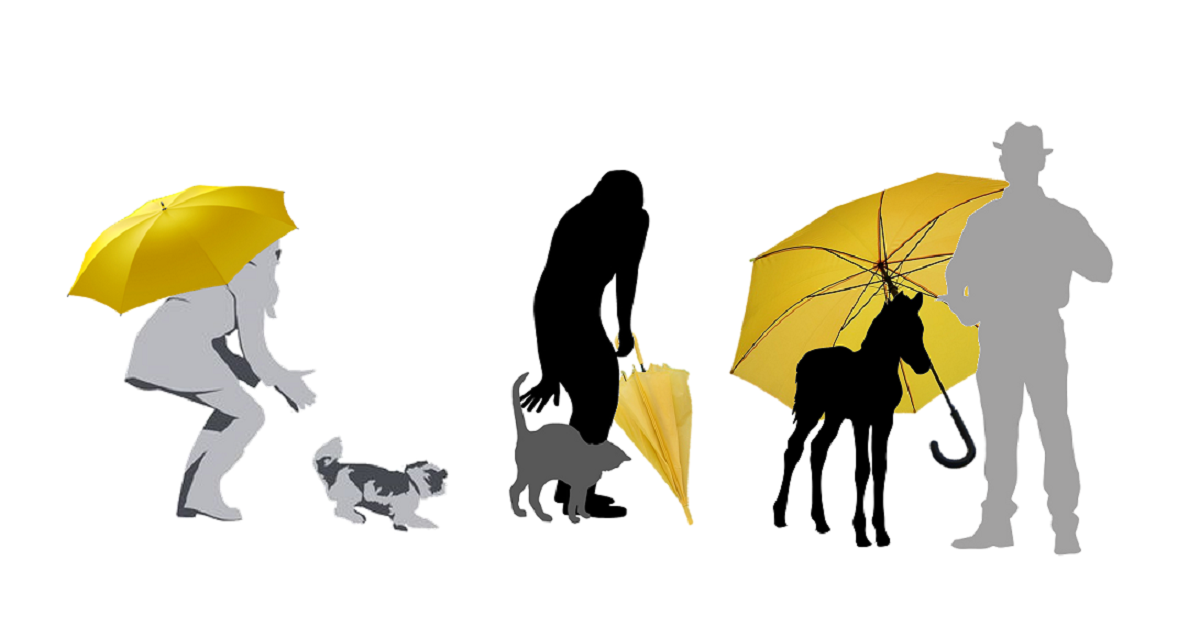
Find their yellow umbrellas.
***
Wanna learn more from yours truly? I have quite a few umbrellas. For you, some of them might be yellow, and others may be black. To access my umbrella collection, sign up and I will keep you posted about my upcoming free Masterclasses, webinars, silly experiments, blog posts and online courses – all about how to get happy, reasonably well behaved animals that thrive in the care of people.
References.
Carney et al. (2010). Power posing brief nonverbal displays affect neuroendocrine levels and risk tolerance.
Cuddy, et al. (2012). The benefit of power posing before a high-stakes social evaluation.
Cuddy, et al. (2017) P-Curving a More Comprehensive Body of Research on Postural Feedback Reveals Clear Evidential Value for Power-Posing Effects: Reply to Simmons and Simonsohn.
Dabbs & Hopper (1990). Cortisol, arousal, and personality in two groups of normal men.
Geller (2018). Therapeutic presence and polyvagal theory: Principles and practices for cultivating effective therapeutic relationships.
Hepburn & McMahon (2017). Pranayama meditation (yoga breathing) for stress relief: Is it beneficial for teachers?
Lecostant & Spitz (2022). Integrative model of Human-Animal Interactions: A one health–one welfare systemic approach to studying HAI.
Montoya et al. (2012). Testosterone, cortisol, and serotonin as key regulators of social aggression: A review and theoretical perspective.
Shors (2004). Learning during stressful times.
Strelan et al. (2014). Power and revenge.


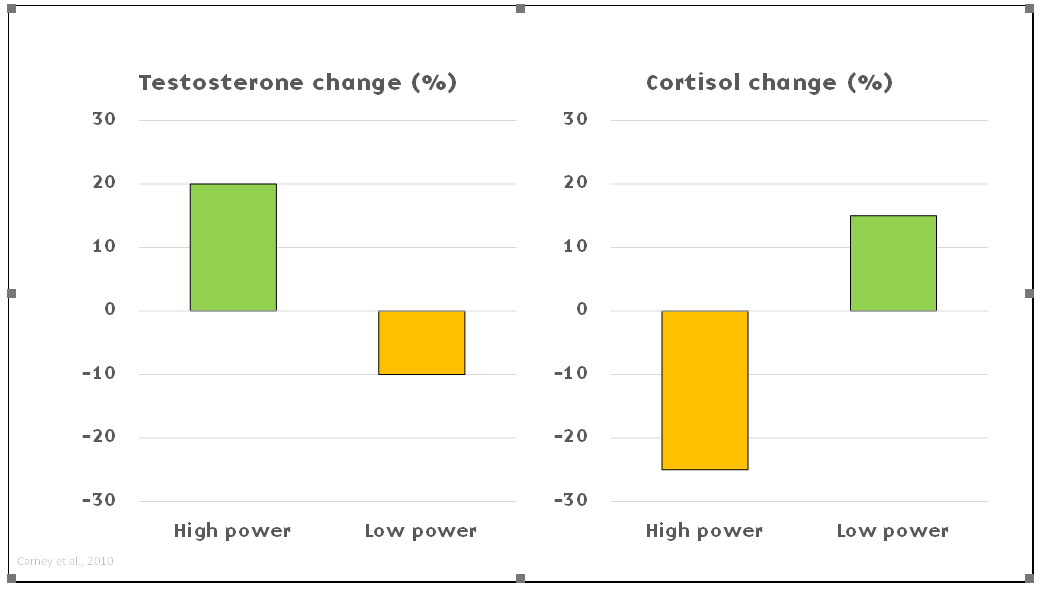
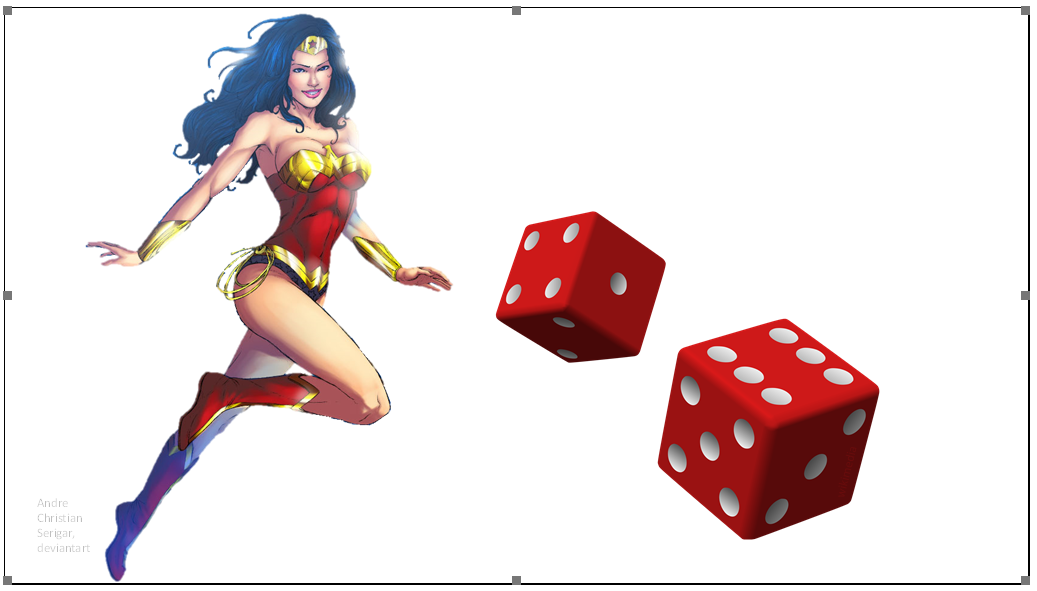

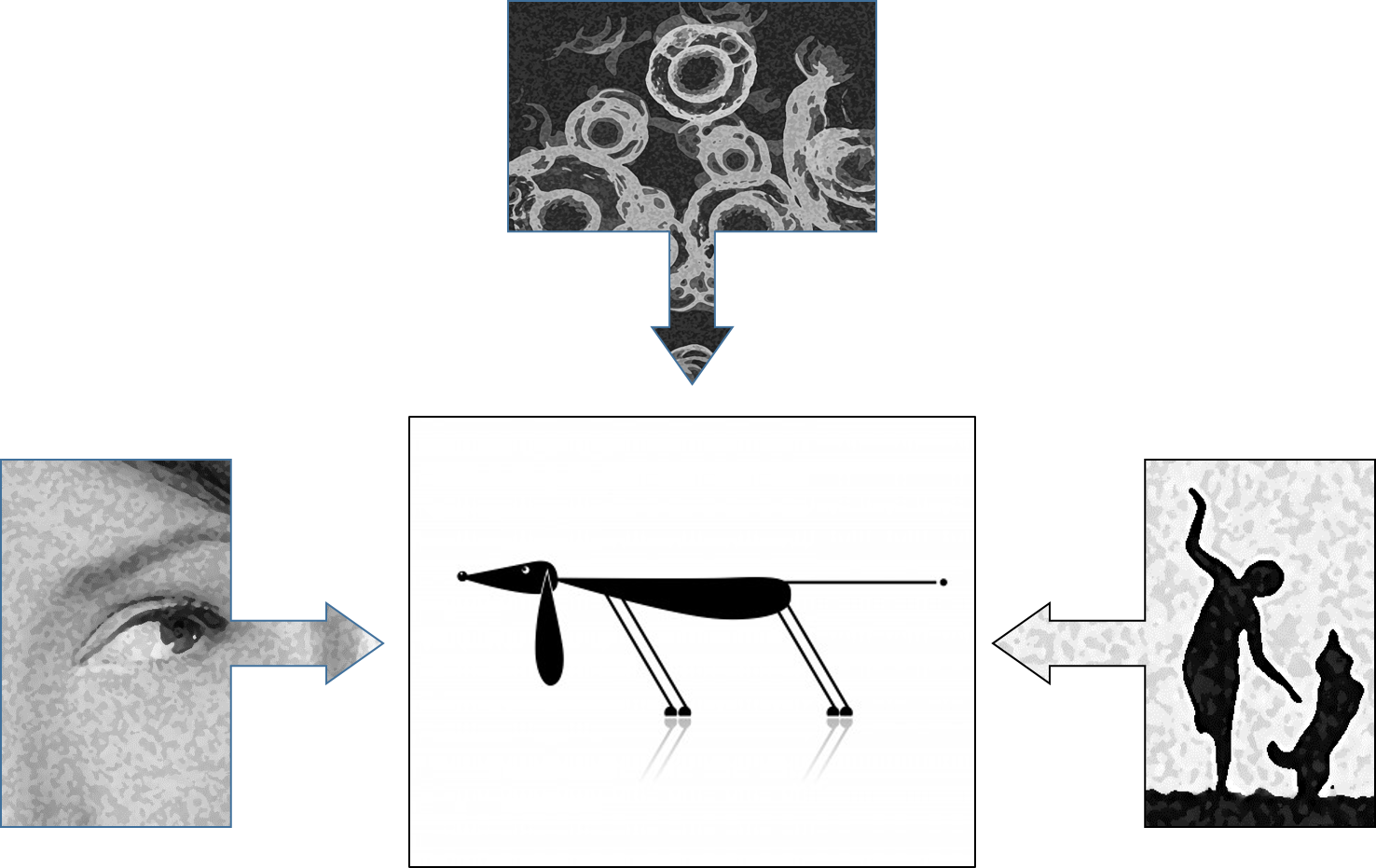


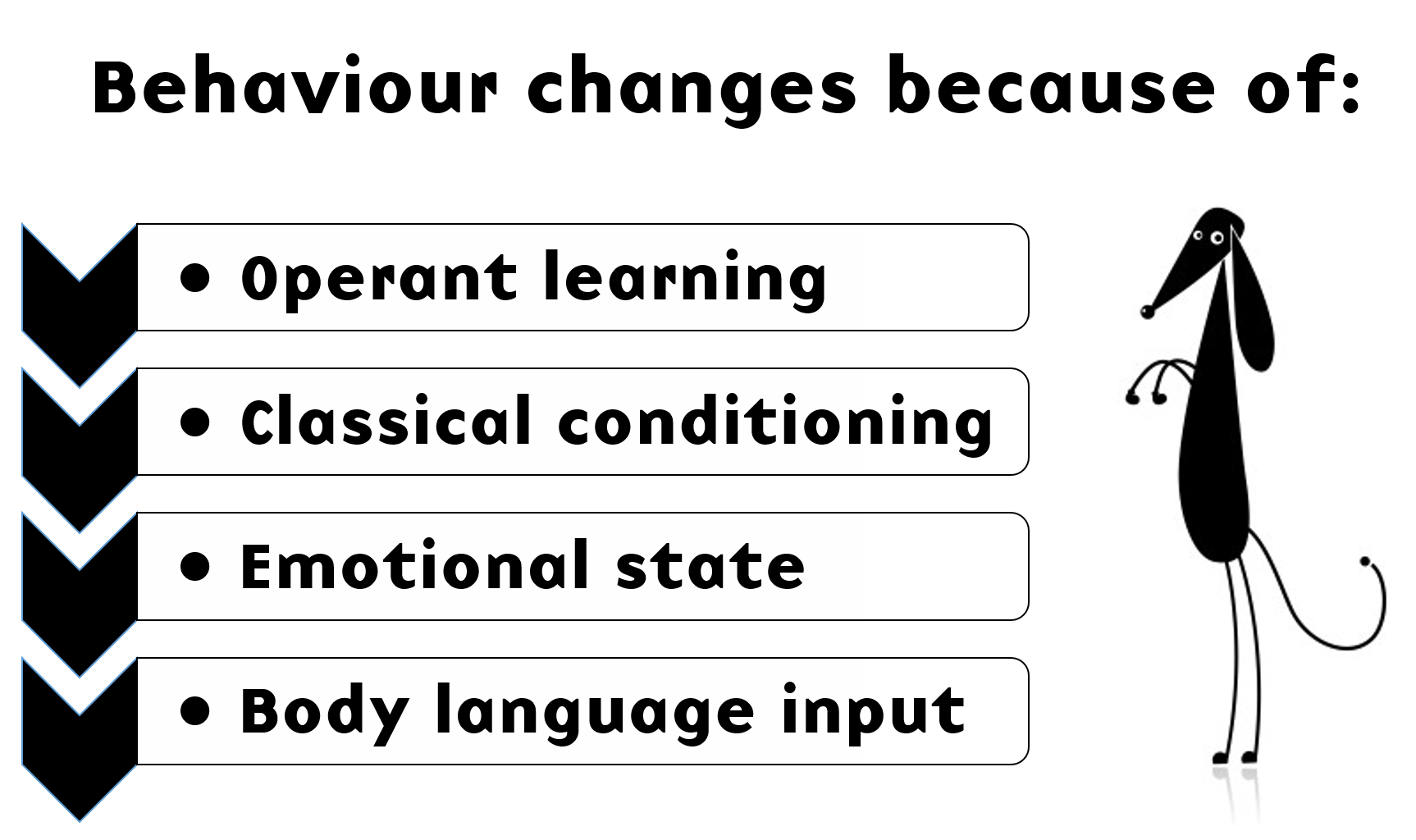
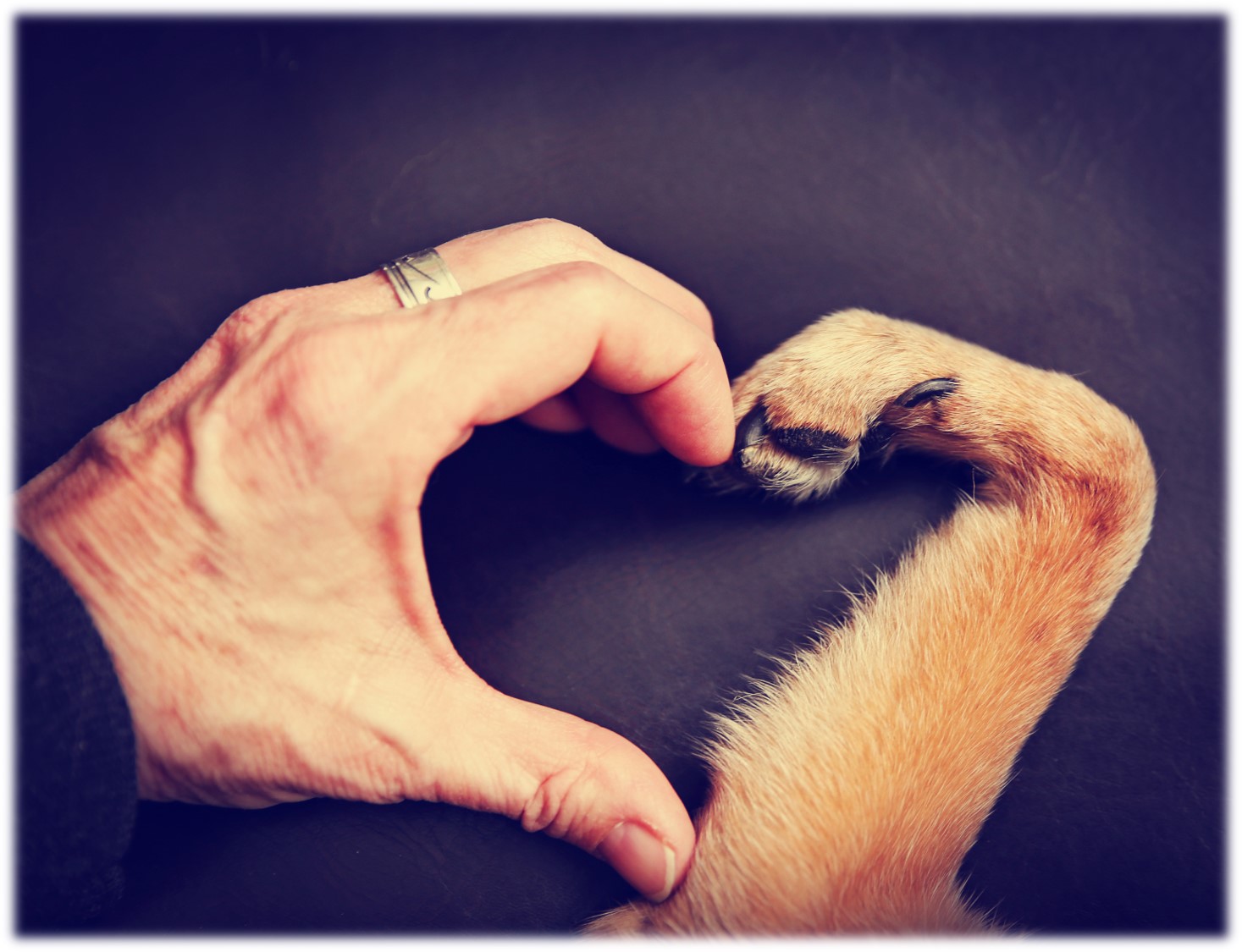
55 replies on “What can we learn from Cesar Millan?”
I love this! I found it extremely interesting and wholeheartedly agree with everything you’ve said. Finding the yellow umbrellas rather than just dismissing everything is definitely the way learn and continue to learn and better our knowledge. Also found Amy Cuddy’s talk inspiring!
There is a horse training method (they might do it in dogs too) I can’t remember what it’s called now, but all the advertising is someone sitting next to a horse laying down or a group of horses who are all relaxed practically falling asleep! I think it’s all based on breathing techniques, lowering heart rates, and just being in the moment. I haven’t really looked too closing into it as it does look a little cuckoo!! But as you’ve said, I’m sure there is yellow umbrellas in that method too!! Can anyone remind me what this method it called??
Hi Michelle, glad you enjoyed the post! Sounds like you’re describing co-regulation exercises (polyvagal theory) – I know they harness those mechanisms in the Trust Technique (but they use different vocabulary).
I gave horse lessons for 17 years at my ranch. Most of my students were children, 90% plus girls. Most of them started out with submissive behaviors and low confidence. I had them first observe me as I walked next to Mystic at liberty, using assertive body language, inviting body language, bonding body language as we moved and communed together. Then I had them walk next to me as we walked next to Mystic at liberty. I pointed out body language changes in posture, fluidity, and we walked as 3 in one until I was satisfied that they had mastered it, then I dropped out and they asked Mystic to walk, turn, trot, stop and back up without touching him. Shy, unconfident girls because assertive and connected, as determined by my horse. Afterwards we would talk about the change. I maintained that they were NOT faking it because a horse responds to what is real inside the person. That assertiveness and confidence was real, perhaps not something they used a lot, but it was a part of who they were and now that they had convinced Mystic of those qualities, they could take that part of themselves out and use it in the rest of their lives.
thanks for sharing, Jackie – such a powerful story! 🙂
Very interesting, Jacky, to be aware of the need for behaviour change in the girls and help them gain confidence. Such a valuable life lesson. I could really have done with that when I was a kid!
Like you, I am no fan of CM – ANY LONGER – over the years since I first started watching his original show, I’ve learned a great deal about animal – make that dog – behavior. Not just from reading and other trainers, but also from observing my own dogs over the years. And one thing that always comes back into focus for me is that dogs (really, any sentient being) are unique individuals, not to be judged by their breed characteristics alone. (That’s another yellow umbrella for me with respect to CM.) I agree with you 100% that Cesar’s knowledge and use of body language is a yellow umbrella. But I also agree with you that his perceptions and descriptions of it are inaccurate at best and potentially dangerously misleading at their worst. Hence, the number of times he’s been bitten as a result of mis-reading a dog’s body language. I’m on dogs number seven and eight since becoming a first-time owner back in 1988. And each one has had its own unique personality traits. And each has surprised me in some way as a result. For instance, my first Golden Retriever was a very self-confident, do-as-I-please-when-I-want-to-do-it type of girl; BUT at about the age of 3 or 4 years, she developed a fear of thunderstorms. It wasn’t the noise she was afraid of because she didn’t seem to think twice about fireworks, gunshots, or other loud noises. It was the energy those storms produced; AND my own discomfort when caught outside in the midst of one. Long story there, but in short, Callie picked up on my fear of the deathly power of lightning strikes. It just blew my mind how quick she was to pick up on that!
Anyway, thank you for this post! I enjoyed reading it; plus it made me more self-aware with respect to my own tendency to go with the “my way or the highway” approach. Ironically, it’s the main personality trait I can’t stand in others but deny at times having myself.
Hi Ducky’s mom, you had me chuckling with recognition at the last paragraph! I’m working hard on stepping off that “my way or the highway” platform… Thanks so much for sharing your journey! 🙂
Thank you. Agree, there is really so much we could learn from Cesar Milan. He has been much vilified and misunderstood in my opinion.
I do have a lot of criticism for his Dog Whisperer series, too – but I chose not to go into that here..! (not sure how his teachings have evolved over the years, though)
Thank you for this insightful post!
As a coach for performance by humans using tools like NLP I have long trained different power poses to have an effect on performance. My understanding is that we are conditioned to feel in a certain way when the body holds a position. For example when we are sad or nervous we curl, and when we are happy and confident we stretch up. Doing it the other way around-we achieve a mental state through the pose of the body. I am sure we can achieve a feeling of being calm, and confident with our posing in conjunction with a deep breath pattern. Staring, imo will evoke a response from the sympathetic nervous system to fight. That is not how I train my animals or meet other humans, but it is interesting to explore the effects of staring or using a strong voice by myself to learn more about how my own emotions are created.
Interesting indeed! Fake it ’til you make it..? 😉
reading your post here of 11-19-2023. If you will…… one big, big yellow umbrella, the first thing he does, very first thing ….. “let’s meet your dog”, he assesses who the dog is. A function overlooked by so, so many. Without that assessment, many lump all dogs into a single group…’dogs’. That is not the reality, dogs like people and other living beings are different. More thought has to be geared to the dogs world. It is different from the people’s world understanding.
Great point! Context is everything! 🙂
if I am having a struggle to communicate with my dog, I have to stop, breathe deeply, relax myself and calm my mind , stand up straight and start again. I do the human “shake-off”. It works every time. If I am relaxed, so is the dog. He definitely senses when my stress hormones are high!
Oh yes – and the concept of co-regulation probably explains a lot of what’s going on – especially if you’re got an attachment bond..! 🙂
The most interesting with Millan is his work with the humans. He tells them how there energies effect the dog and shows them how a change in bodylanguage and thinking can MAKE them fell calm and assertive and the immediate impact it has on the dogs behavior.
That’s exactly what I do as a KBT- therapist. That’s his yellow umbrella
It is interesting for sure how our body language, energy and posture can affect others!
Hi, yes I have found this interesting.
I can’t count how many times I tell my people after weeks of bending down to their reluctant pup walking on lead, to stand up straight and be proud. This has almost an immediate affect on the whole picture in front of them and the dog is walking beside them – smiley faces all round.
So interesting! 🙂 You wouldn’t have any videos, would you, Suzy? 😉
Peculiar article, just what I needed.
Glad you found it interesting! 🙂
About looking for the yellow umbrellas- I think that we are fortunate these days in that there are stores that sell only yellow umbrellas. I think my time is better spent shopping there.
There are sooo many wonderful positive reinforcement trainers putting so much fabulous information out into the world, it’s hard enough to digest what they have to offer. Personally, I feel no need to try to unearth value from trainers I fundamentally disagree with. When I started training, that wasn’t the case- it was harder to get really good positive information, so I had to distill what I could from the resources that were more readily available – to be honest, it not only wasn’t easy, but sometimes painful to have to resist what the trainer in front of me was saying in order to try to get the benefit. But thankfully times have changed in terms of the umbrella shops available.
Yes, for sure it takes time and is painful to sift through all those black umbrellas. And I often don’t bother.
But I think it might help when communicating with the followers of such trainers; that way the discussion can get nuanced and perhaps increases the likelihood that they’ll listen. If we just diss those trainers that might trigger a backfire effect – and we get nowhere…
I found this both challenging and enlightening. I know a lot of professional dog trainers ask their clients to watch Cesar Milan without the sound on, but they ask people to watch the dogs. I’ve done it myself, and it’s frightening. Never noticed this yellow umbrella. I don’t ask my clients to do this. Too many black umbrellas. My best to Cesar, but … just no.
I’m posting because I talk at length about our energy when I work with clients. Prepping with a power pose could be helpful with the training would involve higher arousal levels of work, but could the opposite pose be better before working on a training session to build calmness and lower arousal levels? I’m not sure, but I think I’ll give it a try with my own dog.
Oh yes, watching the dogs is another story altogether…!
I think maybe triggering the parasympathetic part of the nervous system by some really deeeeeeeep breaths (particularly breathing out) would be a really interesting exercise – to see if that calming effect is mirrored in the animals! 🙂
I routinely use deep breathing to calm myself and my horse when the situation is getting out of hand.
Have any studies been done on how breathing affects horses? I swear I can get a horse to sigh by doing 6-10 deep slow breaths…
Love this post. Thanks Karolina.
Haven’t seen any such studies..! Not to say that they don’t exist, though. 🙂
Yes. Paul Owens the ‘original dog whisperer’ swears by deep breaths and it helps in many situations Even sighing or low vibrational tones (mama growls low to get pups to settle) and vagal tone is key in both human and dog!
Oh yes breathing! So interesting, I’m expecting lots of interesting research to come out of that in upcoming years!
My physical therapist taught me a similar technique. He’s a genius imo. Its the opposite of fetal position, arms and fingers outstretched to side at comfortable height, toes curled but not tight , tongue between teeth loose jaw, head turned towards either shoulder. Then take 5 deep slow breaths, notice the huge difference, repeat every 30 minutes as needed. The deep breaths signal ‘safe’ to your brain and the posture is similar to power pose (anti fetal/protective), and repeating resets vagal tone towards parasympathetic.
Oh yes, deep breathing can really transform our autonomic state! 🙂
On my goodness!!! I am reluctant to admit this to my positive training friends, but Cesar Millan started me on the path of becoming a serious student of animal behavior. I read Cesar’s Way 12 years ago and it is no exaggeration to say it changed my life. The principles in the book changed my worldview. It has changed how I deal with children with behavioral issues. My colleagues call my a child whisperer and they all seem to think of me as being gentle and patient.
I didn’t have cable when I read the, so I didn’t see his show until a few years later. When I tried his actual dog handling techniques, I found that is a good way to get bit! Even though I have tended towards balanced training, I have read every piece of solid scientific research on punishment that I have come across. It has changed my views a lot. Several times, I have thought of throwing out any of the dog whispering ideas I’ve used. But my interpretation of the principles of calm-assertive energy is not coercive or violent. (This is especially true when it comes to children, who are much easier for me understand and empathize with.) This seems to be quite different than the interpretation I see fans of Cesar use at the dog park!
Plus, Cesar is not the only dog whisperer around. There are others who have found ways to imitate dog language in a much gentler way, like Turid Rugaas.
Thank you for so succinctly and articulately expressing this issue! I am still trying to sort this out in my own mind. Your hypothesis and ideas for research are things I have wondered about too. Kudos for having such an open mind! I
I will try the power pose idea before my next dog training session.
THanks for sharing your story! We all come into the world of animal behaviour and training differently… let us know if you see any differences when power posing! 🙂
As a true Cesar Millan fan, this topic isn’t unusual and I have heard similar arguments regarding the ‘power pose’. In my own experiences, I have to say, I was raised by a classical dancer and was not allowed to slouch, had to stand up straight, chin up, shoulders back, tummy in…etc…and have not personally experienced a life of low power posing, so there is some truth to how it affects work, friends etc, but my older sister, even though she was taught the same as I, was extremely submissive, introverted and scared of everything. I’m the youngest of 3 siblings and we each had a dog growing up. When I started the daycare 15 years ago, I had dog experience. That was it. We always had 3 or more dogs. We even brought 3 dogs to Canada when we moved here in ’79 from Sweden. But there was one thing I always noted in different situations with our dogs. The black toy poodle was pack leader, and coincidentally, she was my dog. She was calm, assertive. You could tell in her body language. She set the tone. No one messed with her. She controlled our big Lab male dog, and her spazzy sister followed her and stayed close.
Now I think why Cesar uses the power pose is to give the owner a feeling of confidence. Dogs will not follow unstable energy. They avoid it and certainly won’t respect it. I don’t agree that he stares down a dog. Have not seen that once! He says to have intention. Look straight ahead. Focus on where you are going. Don’t look at the dog. What happens? The dog follows. Should the dog follow? Should the dog focus on the owner? Should the dog respect and look up to the owner for being strong and confident and a good leader? Yes, I think so. But dominance is not aggression, and even though the chemicals produced by some power stance or aggressive stare down causes high testosterone, i don’t believe that is what Cesar does. I think he is so misunderstood. I think we are too quick to assume hes doing it wrong, without taking all things into consideration. The dominant wolf in a pack of up to 15 wolves, will utter a low quiet growl to stop or slow down highly excited pack members. That dominant growl is not inviting aggression, but rather draining it and calming things down. That is how I see dominance in my training. And I think that is how Cesar uses it as well. I have tested his techniques over the years and found that they do work, and the dogs don’t end up submissive and stressed, but happy and playful and trusting. Take me out of the game and place an inexperienced person in charge, and watch what happens. I should do that and share the video. I think that study would be interesting to see. Sorry if I went too far on that one comment. LOL
Mimi, the most notorious stare-down that CM does is prob with Holly, aka his worst bite
Learning and changing IS stressful, whether you’re a human, dog, or an elephant. We often learn best by the mistakes and corrections we make. I don’t see that letting a dog stress for a bit is a bad thing. Nor a human. When we stress, we think, we imprint. I’m no PhD and of course, these are just my opinions.
[…] think that we can learn something from everyone, including people from the other camp – so my purpose with this post is for us to open the doors and start a […]
Wow, very powerful information. I think I had refpjected it because I am also not a fan of the dog whisperer. I have a rescue dog who is very fearful. She also feels like she needs to be in charge. I have noticed her behavior change with different people. I’m going to note the poses and her reactions.
She also became much less fearful when we unexpectedly adopted a male Husky. He is a soft alpha but his body language gives of the idea that he is in control. Is she smelling his testosterone as protection?
Hard to know what drives behaviour change without more info… Often the presence of another animal will impact fearfulness – perhaps smell is involved, perhaps not…
Another interesting post, thanks. I was considering this concept relating to horses and searched for any correlation with other scientific papers. I only found other Amy Cuddy links or this below which seems to be refuting the evidence of the trials. I still feel our energy and intention is an important element to working with horses but really struggle to be anything but anecdotal about this as so little supporting scientific evidence is out there- unless you can advise of any.
http://faculty.haas.berkeley.edu/dana_carney/pdf_My%20position%20on%20power%20poses.pdf
Wow, that is really interesting! I wasn’t aware of that. Who is the author of that document, Cuddy herself? I think this illustrates beautifully the way science flip-flops and gradually progresses.
So, maybe power posing doesn’t have the purported unconscious effects on physiology and behaviour after all, but that doesn’t dispute that there might be effects of human body language on animal behaviour. And the placebo effect could be in action here, too..!
It seems this topic is far from settled: http://ideas.ted.com/inside-the-debate-about-power-posing-a-q-a-with-amy-cuddy/
Thank you for this blog Karolina, which I found conceptually and scientifically explained what I have instinctively used and promoted as a way of influencing a dog’s perception of us – a case of your yellow umbrella being my lightbulb moment. I have always taken another couple of parameters into account when interacting with dogs. I am totally comfortable with your High Power and Low Power posing, but would add that the degree of calm assertiveness that can be attained depends also on active relaxation techniques simlar to yogic practice of slowing breathing and lowering heart-rate. I might postulate that this could result in an even greater lowering of Cortisol levels. I can now see a way to have my handlers achieve even better connections with their dogs, by adopting High Power posing, breathing control and heart-rate control before performance situations, then maintaining the relaxation techniques throughout.
So interesting – thanks for sharing! I’m sure that there are many exercises, both mental and physical, that can but us in a better emotional state to teach our animals!
Thanks Heather, that put it into context for me. High power posing isn’t a threat stance, but a calming pleasant place, free of stress and acceptance of each other. Ready to learn, focused, alert. Someone is controller/leader, the Dominant.
I cringe at the words controller and dominant. Do you like people who treat you this way? A good leader should be confident but kind. Willing to change their mind if necessary.
Respectful. A sense of humour can be helpful. Definitely not a dictator.
Hi there Karolina
Great post and love the umbrella concept which is how we learn and move forward rather than stay entrenched in our respective bubbles, be it scientific/philosophical/ethical, politically correct etc etc………
With regards to body language I think it is the essence as to where many of the owners whom I help go wrong. There is such hesitation after having struggled with a variety of problems which have crept up over the years largely due to the lack of clear guidance from the owners as to what their expectations of their dog are. Many owner do not even know what the want from their dogs or their expectations are unrealistic or they are not followed through consistently. So by now they see their dogs as “rebellious” and they are at a loss as to how to deal with things and become insecure. They then transmit this insecurity to their dogs through their body language. The insecurity can be conveyed not just by an apparently insecure stance but also by aggression on behalf of the owner (like you said from “a Clark Kent kind of place, where stress rules”). Once they know what they want from their dogs, how they might achieve this and what THEY as owners have to do to achieve this then this gives THEM the confidence which they need to be able to transmit a CLEAR, CONFIDENT AND BALANCED BODY LANGUAGE TO THEIR DOG. The change in the dog’s behaviour is pretty much instant (in certain types behaviour modification cases, as described above).
Tack för ett mycket intressant föredrag Karolina. Mycket uppskattat
Interesting – what you’re describing is really a vicious circle! Glad to hear you’re teaching your clients to break it so efficiently! 🙂
Interesting topic! Two thoughts:
I would love to see research on human behavior and hormone change after other body poses than High Power Pose, most interested in a “good” posture more like the ones you see in a dancer, a yoga practitioner, an effecient runner etc. I’m interested of the effects of a less extreme but probably effective pose than the High Power. Maybe we can call it Relaxed Aligned Posture? Might that pose also reduce stress level, but more likely induce mirroring than complementing Low Power Pose? Would this pose be easier to bring in to interactions with other, like the job interview? Would be interesting to know!
I don’t know about any research but in the horse world there is a lot of anecdotial knowledge about body language interactions between human and horse. We have the High Power Pose, combined with negative reinforcement training. And also people more in to creating mirroring between horse and human, both in ground work and ridden work. They focus on balance and body use in the human, aiming for something like Relaxed Aligned Posture. Would be interesting to see experimental work on this! Let me know if you know of any!
Oooh, two really interesting thoughts! Both about finding alternatives to the High Power Pose, and also the concept of mirroring. Not being a horse-person, is the horse-related mirroring when riding the horse or on the ground? (that is; is mirroring achieved through tactile or visual information?)
I would say both!
Your concern about power-posturing provoking ‘complementary’ stressed, cortisol –driven emotion in dogs might be addressed by trying to facilitate ‘mirroring’ instead. This happens between humans quite often and is thought to be linked to rapport, empathy and may also play a part in the phenomenon of emotion contagion (eg Elaine Hatfield’s work). I’m speculating that, as with humans, you would need to engage the dog first, then gradually change your own behaviour, taking the dog along with you, as it were!
Interesting and worth looking into! Certainly the issue of body language is not well explored with regards to human-animal interactions! I’m wondering if perhaps this is what Eva Bodfäldt is touching on in her On-Off training (owner and dog alternating between playful states and calm relaxation).
Such a great post! I’m no fan of Millan myself, but what you write makes sense. Everybody has a yellow umbrella, no matter how small. I’ll try to remember, and find them!
Power poses were very interesting too. Food for thought; reconsidering my relationship with my dog.
Thanks Josefin! Glad you found it thought-provoking! 🙂